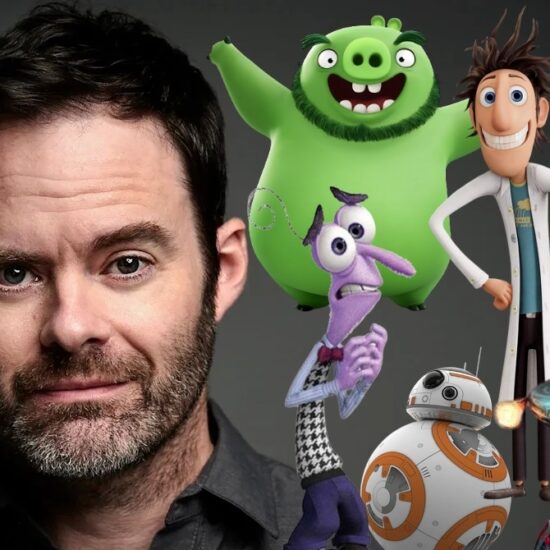
Animation has been a powerful tool in the world of advertising for decades. From the earliest days of hand-drawn commercials to the latest computer-generated masterpieces, animation has allowed advertisers to create visually stunning and memorable campaigns that capture the attention of audiences and leave a lasting impression.
In this blog post, we will take a closer look at how animation has evolved over the years and how it has changed the way that businesses and organizations market their products and services. From the earliest days of stop-motion animation to the latest advancements in 3D technology, we will explore the many ways that animation has been used to create compelling and effective advertisements.
So, whether you’re a marketing professional looking to create your next ad campaign or simply a curious observer of the advertising industry, this post will provide an in-depth look at how animation has changed advertising and how it continues to shape the way we see the world around us.
The Beginning of Advertising with Animation:
Animation has been a part of advertising since the early days of motion pictures. In the 1920s, animation techniques such as cel animation and stop-motion animation were used to create short commercials that were shown in movie theaters. These early animation ads were simple, often featuring hand-drawn illustrations and basic animation techniques. However, they were still able to capture the attention of audiences and leave a lasting impression.
One of the most iconic early animation ads is the “Fleischer Studios” series featuring the character “Koko the Clown.” These ads were produced by the Fleischer brothers, Max and Dave, and were some of the first animation ads to be shown in movie theaters. The ads featured the character of Koko the Clown, who would perform a short skit or song and then encourage audiences to visit the sponsor’s store. These ads were so popular that they ran for several years in movie theaters and even had their own series of short films.
As technology advanced, so did the animation techniques used in advertising. By the 1950s, animation had become a popular medium for TV commercials. The use of color, sound and movement made animation an ideal medium to create commercials that were both visually stunning and engaging. From the early days of animation, it has been a powerful tool that has allowed advertisers to create visually stunning and memorable campaigns that capture the attention of audiences and leave a lasting impression.
Advertising with Animation Today:
Animation in advertising has come a long way since the early days of hand-drawn illustrations and basic animation techniques. Today, animation is a highly sophisticated and versatile technique that is used to create commercials that are visually stunning, engaging, and memorable. With the advancements in technology, animation has become more accessible and cost-effective, making it a popular choice for advertisers of all sizes.
One of the most significant advancements in animation technology is the use of computer-generated imagery (CGI). This technology allows animators to create highly detailed and realistic animation that is almost indistinguishable from live-action footage. This has opened up a whole new world of possibilities for advertisers looking to create visually stunning commercials that capture the attention of audiences.
Another popular animation technique used in advertising today is motion graphics. This technique uses animation to create dynamic and engaging visuals that can convey information in an easy-to-understand and visually appealing manner. Motion graphics are often used in commercials for products and services that require a lot of explaining such as finance and technical products.
Animation has also become a popular choice for social media advertising. With the rise of platforms like Instagram, TikTok and Snapchat, animation has become a powerful tool for advertisers looking to create short-form, engaging content that can be shared and viewed on social media.
In conclusion, animation has come a long way since its early days, and it continues to evolve and change the way that businesses and organizations market their products and services. Today, animation is a sophisticated and versatile medium that is used to create visually stunning and engaging commercials that capture the attention of audiences and leave a lasting impression.
Traditional Advertising vs Advertising with Animation:
Traditional advertising typically involves the use of print media, such as newspapers, magazines, and billboards, or broadcast media, such as television and radio. These methods of advertising are often static, with minimal movement or animation.
On the other hand, advertising with animation involves the use of animated visuals and motion graphics to create dynamic, visually engaging content. This type of advertising can be found on television, online, and in social media. It can be used to create commercials, explainer videos, and other forms of advertising content.
One of the main advantages of traditional advertising is its reach. Print and broadcast media have long been established, and they are still widely consumed by audiences. Traditional advertising also tends to be more cost-effective than animation, especially for small businesses. Traditional advertising can be less expensive to produce and can reach a large audience at once.
Advertising with animation, on the other hand, has many advantages over traditional advertising. One of the main benefits is that animation can capture the attention of audiences in a way that traditional advertising cannot. Animation is dynamic, visually engaging, and can be used to create a wide range of emotions and feelings. Animation is also well-suited for the digital age, where audiences are increasingly consuming video content online.
Conclusion:
In conclusion, animation has been a game-changer in the world of advertising. It has evolved from a simple, hand-drawn technique to a highly sophisticated and versatile medium that can be used to create visually stunning, engaging and memorable campaigns.
From the early days of stop-motion animation to the latest advancements in 3D technology, animation has been used to create compelling and effective advertisements that capture the attention of audiences. The use of computer-generated imagery (CGI) and motion graphics techniques has expanded the possibilities for animation in advertising and has made it more accessible to businesses of all sizes.
Animation has also become a popular choice for social media advertising, where short, visually engaging content is in high demand. Overall, animation has played a key role in shaping the way we see and interact with advertising and will continue to do so in the future.
My Name is Zan Korene and I am an Animator and founder of Digital Garden Animation from Slovenia, Central Europe.
Me and a couple of my friends have been animating for 5 years and counting, when we decided to turn our art into a living, by creating all sorts of Animated short films and Video Game characters for our clients.
Shortly after, we decided to start writing a Blog about Animation and how to make it easier for beginners with tips, tricks and advice on any question that popped up in our mind. The Content is still fairly fresh and much more will be available for everyone to read, soon














